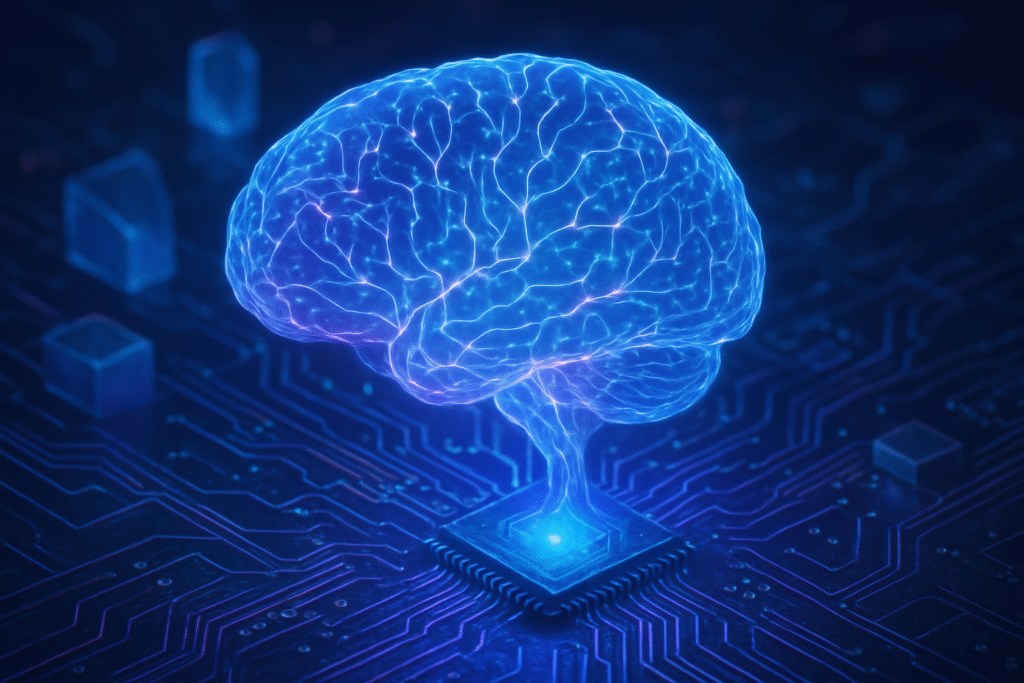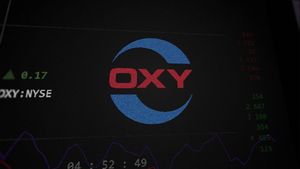
The artificial intelligence landscape is on the cusp of a profound transformation, driven by unprecedented breakthroughs in neuromorphic computing. As of October 2025, this cutting-edge field, which seeks to mimic the human brain's structure and function, is rapidly transitioning from academic research to commercial viability. These advancements in AI-specific semiconductor architectures promise to redefine computational efficiency, real-time processing, and adaptability for AI workloads, addressing the escalating energy demands and performance bottlenecks of conventional computing.
The immediate significance of this shift is nothing short of revolutionary. Neuromorphic systems offer radical energy efficiency, often orders of magnitude greater than traditional CPUs and GPUs, making powerful AI accessible in power-constrained environments like edge devices, IoT sensors, and mobile applications. This paradigm shift not only enables more sustainable AI but also unlocks possibilities for real-time inference, on-device learning, and enhanced autonomy, paving the way for a new generation of intelligent systems that are faster, smarter, and significantly more power-efficient.
Technical Marvels: Inside the Brain-Inspired Revolution
The current wave of neuromorphic innovation is characterized by the deployment of large-scale systems and the commercialization of specialized chips. Intel (NASDAQ: INTC) stands at the forefront with its Hala Point, the largest neuromorphic system to date, housing 1,152 Loihi 2 processors. Deployed at Sandia National Laboratories, this behemoth boasts 1.15 billion neurons and 128 billion synapses across 140,544 neuromorphic processing cores. It delivers state-of-the-art computational efficiencies, achieving over 15 TOPS/W and offering up to 50 times faster processing while consuming 100 times less energy than conventional CPU/GPU systems for certain AI tasks. Intel is further nurturing the ecosystem with its open-source Lava framework.
Not to be outdone, SpiNNaker 2, a collaboration between SpiNNcloud Systems GmbH, the University of Manchester, and TU Dresden, represents a second-generation brain-inspired supercomputer. TU Dresden has constructed a 5 million core SpiNNaker 2 system, while SpiNNcloud has delivered systems capable of simulating billions of neurons, demonstrating up to 18 times more energy efficiency than current GPUs for AI and high-performance computing (HPC) workloads. Meanwhile, BrainChip (ASX: BRN) is making significant commercial strides with its Akida Pulsar, touted as the world's first mass-market neuromorphic microcontroller for sensor edge applications, boasting 500 times lower energy consumption and 100 times latency reduction compared to conventional AI cores.
These neuromorphic architectures fundamentally differ from previous approaches by abandoning the traditional von Neumann architecture, which separates memory and processing. Instead, they integrate computation directly into memory, enabling event-driven processing akin to the brain. This "in-memory computing" eliminates the bottleneck of data transfer between processor and memory, drastically reducing latency and power consumption. Companies like IBM (NYSE: IBM) are advancing with their NS16e and NorthPole chips, optimized for neural inference with groundbreaking energy efficiency. Startups like Innatera unveiled their sub-milliwatt, sub-millisecond latency SNP (Spiking Neural Processor) at CES 2025, targeting ambient intelligence, while SynSense offers ultra-low power vision sensors like Speck that mimic biological information processing. Initial reactions from the AI research community are overwhelmingly positive, recognizing 2025 as a "breakthrough year" for neuromorphic computing's transition from academic pursuit to tangible commercial products, backed by significant venture funding.
Event-based sensing, exemplified by Prophesee's Metavision technology, is another critical differentiator. Unlike traditional frame-based vision systems, event-based sensors record only changes in a scene, mirroring human vision. This approach yields exceptionally high temporal resolution, dramatically reduced data bandwidth, and lower power consumption, making it ideal for real-time applications in robotics, autonomous vehicles, and industrial automation. Furthermore, breakthroughs in materials science, such as the discovery that standard CMOS transistors can exhibit neural and synaptic behaviors, and the development of memristive oxides, are crucial for mimicking synaptic plasticity and enabling the energy-efficient in-memory computation that defines this new era of AI hardware.
Reshaping the AI Industry: A New Competitive Frontier
The rise of neuromorphic computing promises to profoundly reshape the competitive landscape for AI companies, tech giants, and startups alike. Companies like Intel, IBM, and Samsung (KRX: 005930), with their deep pockets and research capabilities, are well-positioned to leverage their foundational work in chip design and manufacturing to dominate the high-end and enterprise segments. Their large-scale systems and advanced architectures could become the backbone for next-generation AI data centers and supercomputing initiatives.
However, this field also presents immense opportunities for specialized startups. BrainChip, with its focus on ultra-low power edge AI and on-device learning, is carving out a significant niche in the rapidly expanding IoT and automotive sectors. SpiNNcloud Systems is commercializing large-scale brain-inspired supercomputing, targeting mainstream AI and hybrid models with unparalleled energy efficiency. Prophesee is revolutionizing computer vision with its event-based sensors, creating new markets in industrial automation, robotics, and AR/VR. These agile players can gain significant strategic advantages by specializing in specific applications or hardware configurations, potentially disrupting existing products and services that rely on power-hungry, latency-prone conventional AI hardware.
The competitive implications extend beyond hardware. As neuromorphic chips enable powerful AI at the edge, there could be a shift away from exclusive reliance on massive cloud-based AI services. This decentralization could empower new business models and services, particularly in industries requiring real-time decision-making, data privacy, and robust security. Companies that can effectively integrate neuromorphic hardware with user-friendly software frameworks, like those being developed by Accenture (NYSE: ACN) and open-source communities, will gain a significant market positioning. The ability to deliver AI solutions with dramatically lower total cost of ownership (TCO) due to reduced energy consumption and infrastructure needs will be a major competitive differentiator.
Wider Significance: A Sustainable and Ubiquitous AI Future
The advancements in neuromorphic computing fit perfectly within the broader AI landscape and current trends, particularly the growing emphasis on sustainable AI, decentralized intelligence, and the demand for real-time processing. As AI models become increasingly complex and data-intensive, the energy consumption of training and inference on traditional hardware is becoming unsustainable. Neuromorphic chips offer a compelling solution to this environmental challenge, enabling powerful AI with a significantly reduced carbon footprint. This aligns with global efforts towards greener technology and responsible AI development.
The impacts of this shift are multifaceted. Economically, neuromorphic computing is poised to unlock new markets and drive innovation across various sectors, from smart cities and autonomous systems to personalized healthcare and industrial IoT. The ability to deploy sophisticated AI capabilities directly on devices reduces reliance on cloud infrastructure, potentially leading to cost savings and improved data security for enterprises. Societally, it promises a future with more pervasive, responsive, and intelligent edge devices that can interact with their environment in real-time, leading to advancements in areas like assistive technologies, smart prosthetics, and safer autonomous vehicles.
However, potential concerns include the complexity of developing and programming these new architectures, the maturity of the software ecosystem, and the need for standardization across different neuromorphic platforms. Bridging the gap between traditional artificial neural networks (ANNs) and spiking neural networks (SNNs) – the native language of neuromorphic chips – remains a challenge for broader adoption. Compared to previous AI milestones, such as the deep learning revolution which relied on massive parallel processing of GPUs, neuromorphic computing represents a fundamental architectural shift towards efficiency and biological inspiration, potentially ushering in an era where intelligence is not just powerful but also inherently sustainable and ubiquitous.
The Road Ahead: Anticipating Future Developments
Looking ahead, the near-term will see continued scaling of neuromorphic systems, with Intel's Loihi platform and SpiNNcloud Systems' SpiNNaker 2 likely reaching even greater neuron and synapse counts. We can expect more commercial products from BrainChip, Innatera, and SynSense to integrate into a wider array of consumer and industrial edge devices. Further advancements in materials science, particularly in memristive technologies and novel transistor designs, will continue to enhance the efficiency and density of neuromorphic chips. The software ecosystem will also mature, with open-source frameworks like Lava, Nengo, and snnTorch gaining broader adoption and becoming more accessible for developers.
On the horizon, potential applications are vast and transformative. Neuromorphic computing is expected to be a cornerstone for truly autonomous systems, enabling robots and drones to learn and adapt in real-time within dynamic environments. It will power next-generation AR/VR devices with ultra-low latency and power consumption, creating more immersive experiences. In healthcare, it could lead to advanced prosthetics that seamlessly integrate with the nervous system or intelligent medical devices capable of real-time diagnostics and personalized treatments. Ambient intelligence, where environments respond intuitively to human needs, will also be a key beneficiary.
Challenges that need to be addressed include the development of more sophisticated and standardized programming models for spiking neural networks, making neuromorphic hardware easier to integrate into existing AI pipelines. Cost-effective manufacturing processes for these specialized chips will also be critical for widespread adoption. Experts predict continued significant investment in the sector, with market valuations for neuromorphic-powered edge AI devices projected to reach $8.3 billion by 2030. They anticipate a gradual but steady integration of neuromorphic capabilities into a diverse range of products, initially in specialized domains where energy efficiency and real-time processing are paramount, before broader market penetration.
Conclusion: A Pivotal Moment for AI
The breakthroughs in neuromorphic computing mark a pivotal moment in the history of artificial intelligence. We are witnessing the maturation of a technology that moves beyond brute-force computation towards brain-inspired intelligence, offering a compelling solution to the energy and performance demands of modern AI. From large-scale supercomputers like Intel's Hala Point and SpiNNcloud Systems' SpiNNaker 2 to commercial edge chips like BrainChip's Akida Pulsar and IBM's NS16e, the landscape is rich with innovation.
The significance of this development cannot be overstated. It represents a fundamental shift in how we design and deploy AI, prioritizing sustainability, real-time responsiveness, and on-device intelligence. This will not only enable a new wave of applications in robotics, autonomous systems, and ambient intelligence but also democratize access to powerful AI by reducing its energy footprint and computational overhead. Neuromorphic computing is poised to reshape AI infrastructure, fostering a future where intelligent systems are not only ubiquitous but also environmentally conscious and highly adaptive.
In the coming weeks and months, industry observers should watch for further product announcements from key players, the expansion of the neuromorphic software ecosystem, and increasing adoption in specialized industrial and consumer applications. The continued collaboration between academia and industry will be crucial in overcoming remaining challenges and fully realizing the immense potential of this brain-inspired revolution.
This content is intended for informational purposes only and represents analysis of current AI developments.
TokenRing AI delivers enterprise-grade solutions for multi-agent AI workflow orchestration, AI-powered development tools, and seamless remote collaboration platforms. For more information, visit https://www.tokenring.ai/.







